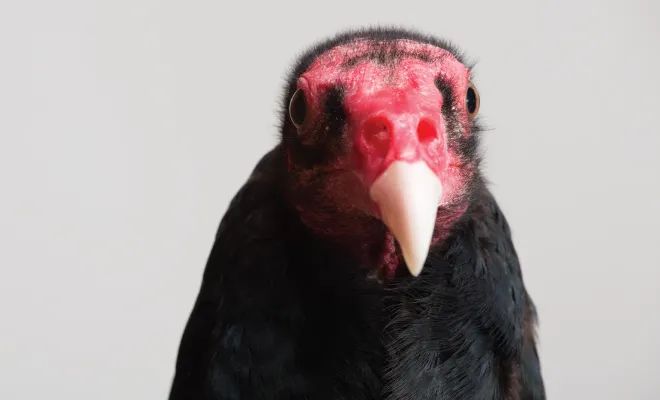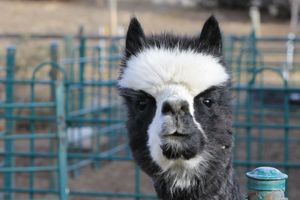
Turkey Vulture
Cathartes aura
Vultures in general are easy to recognize due to their bald heads and black feathers that cover their bodies. There are three species of vulture in the United States: the black vulture, the turkey vulture, and the California condor. It can be very tricky to tell the difference between a black vulture and a turkey vulture, but an easy trick is that black vultures are all black, they have all black feathers, and a black bald head. Turkey vultures have a red bald head with a light or white color beak and mainly black feathers, with white under feathers also known as primary or flight feathers. Turkey vultures can range from as far north as the southern border of Canada and as far south as Chile. Their geographical range is currently growing, and they can be found anywhere they can find carrion, which is most often in or around human activity. Carrion is defined as decaying or dead animals. Vultures have many adaptations that allow them to successfully scavenge. They are one of the only birds with a highly developed sense of smell, and they have incredibly powerful stomach acid to prevent them from catching or carrying diseases that they may encounter. Turkey vultures, along with all other scavenger species, play an important role in their ecosystems by cleaning up carrion, which keeps the ecosystem healthier and cleaner.
Click HERE for a Vulture Activity Sheet!
Our Current Residents
Gomez, Male- Hatched in 2016 (estimated and celebrated)
Gomez was donated to the Zoo in 2017 after being rehabilitated at the Montana Raptor Conservation Center in Bozeman, Montana for a wing injury he sustained in the wild. He was deemed non-releasable due to his lack of ability to fly long distances or even properly, but he can fly around his habitat from perch to perch. Today, you can often find Gomez more towards the front of his habitat, and on warm sunny days he may have his wings outstretched like he is sunbathing.
Taxonomy
- Kingdom: Animalia
- Phylum: Chordata
- Class: Aves
- Order: Cathartiformes
- Family: Cathartidae
- Genus: Cathartes
- Species: Cathartes aura
Animal Facts
Detritivores: mainly eat carrion which is dead or decaying animals
Population Status (according to IUCN): currently listed as Least Concern
Montana Population Status (according to Montana Field Guide): currently listed as Apparently Secure
Habitat: forested and open areas (often near humans where carrion is around)
Activity: diurnal- mainly active during the day

















































